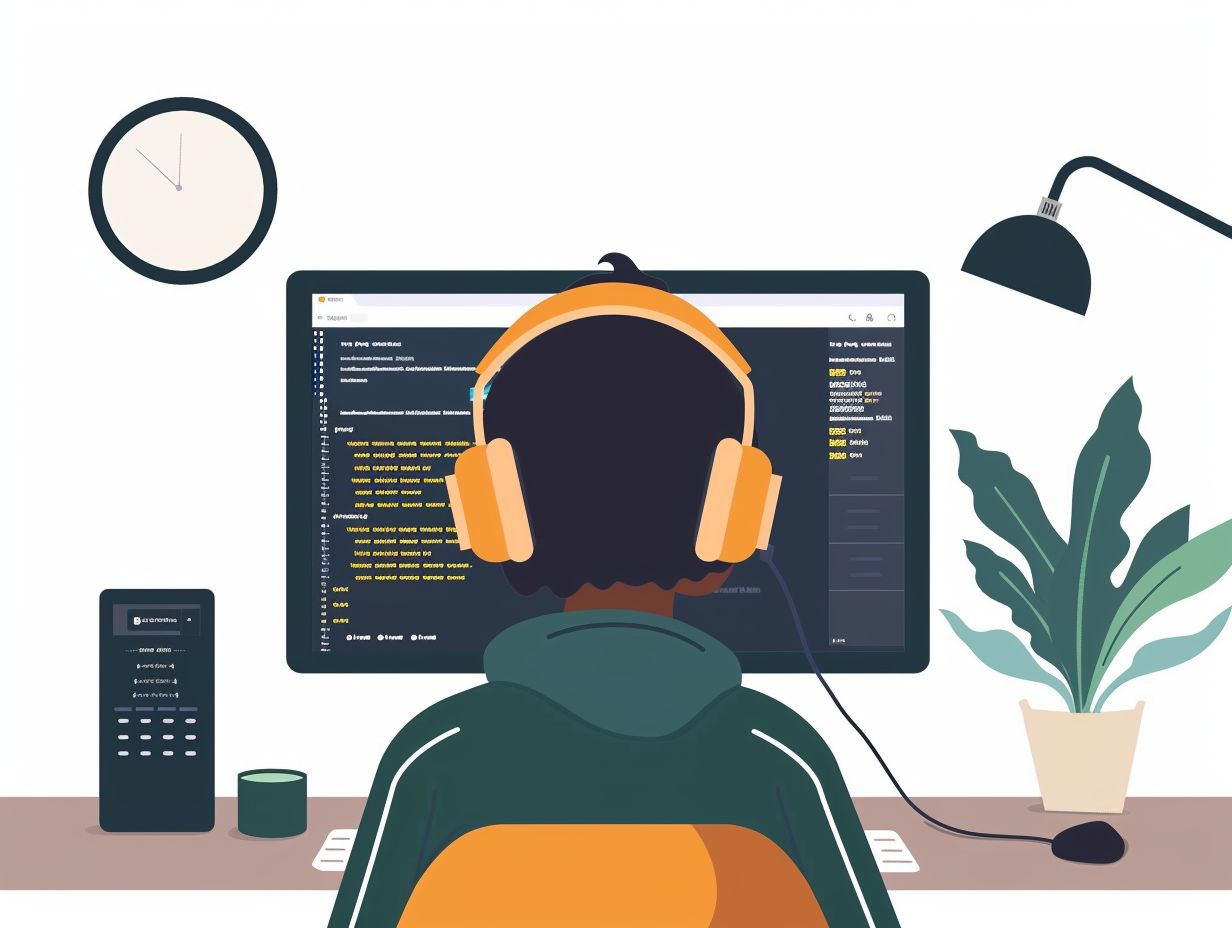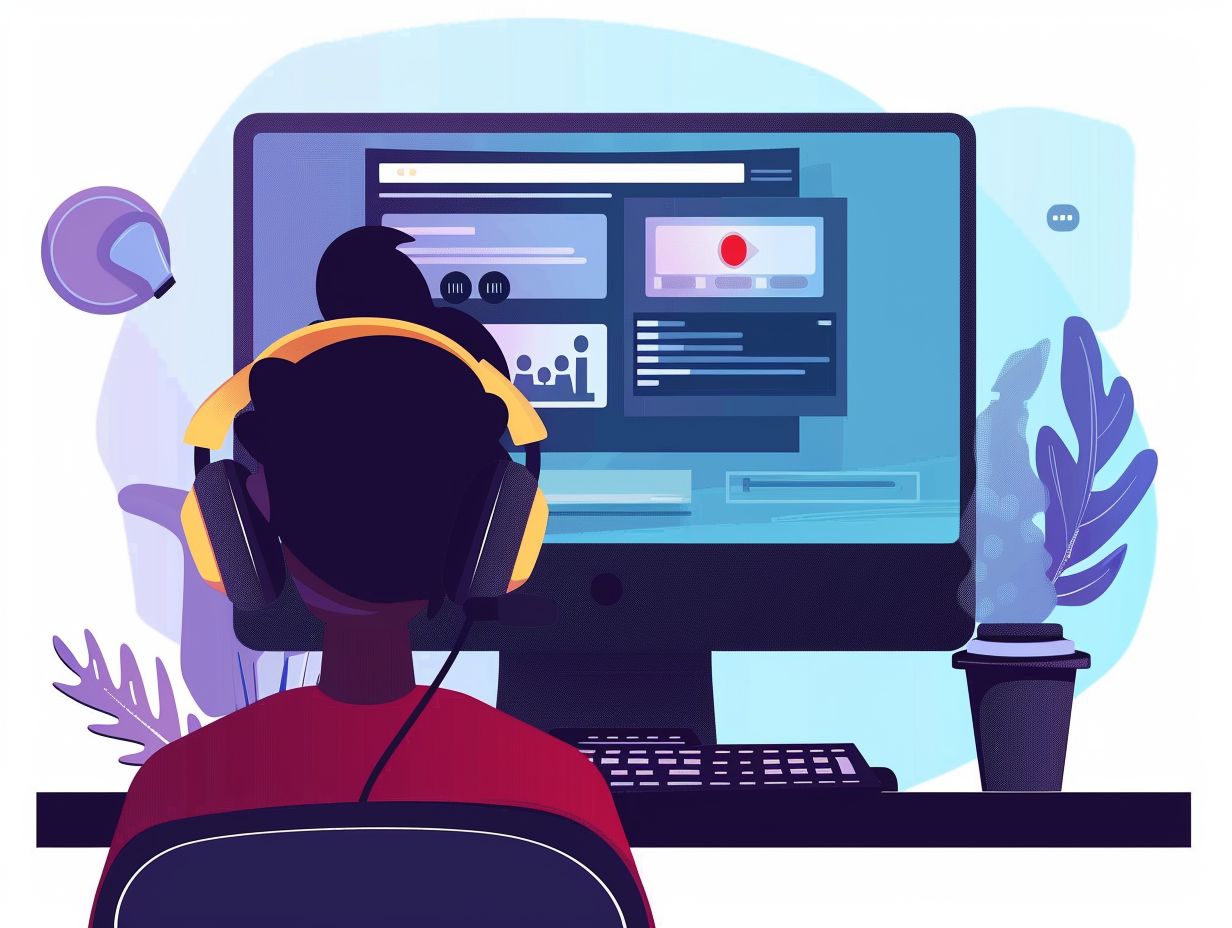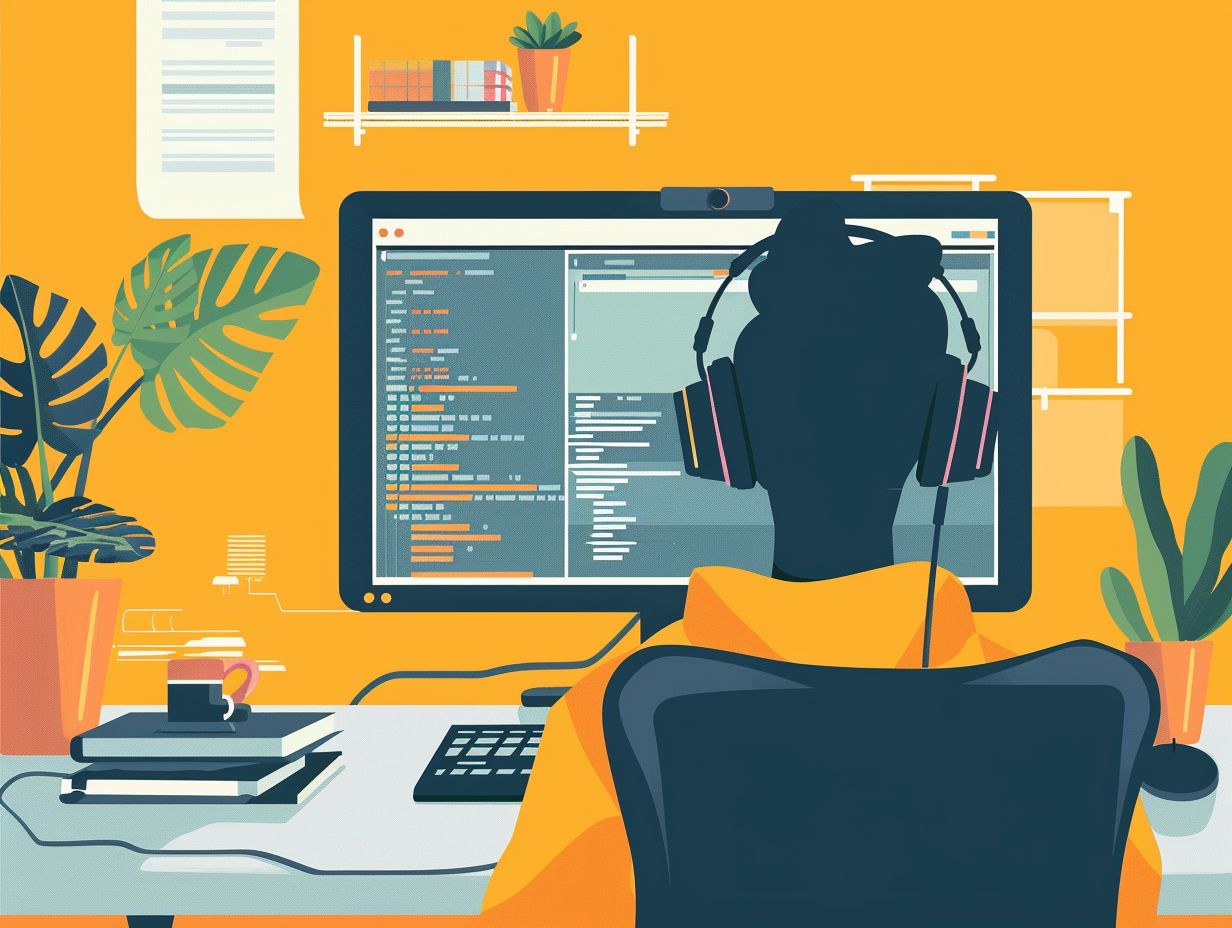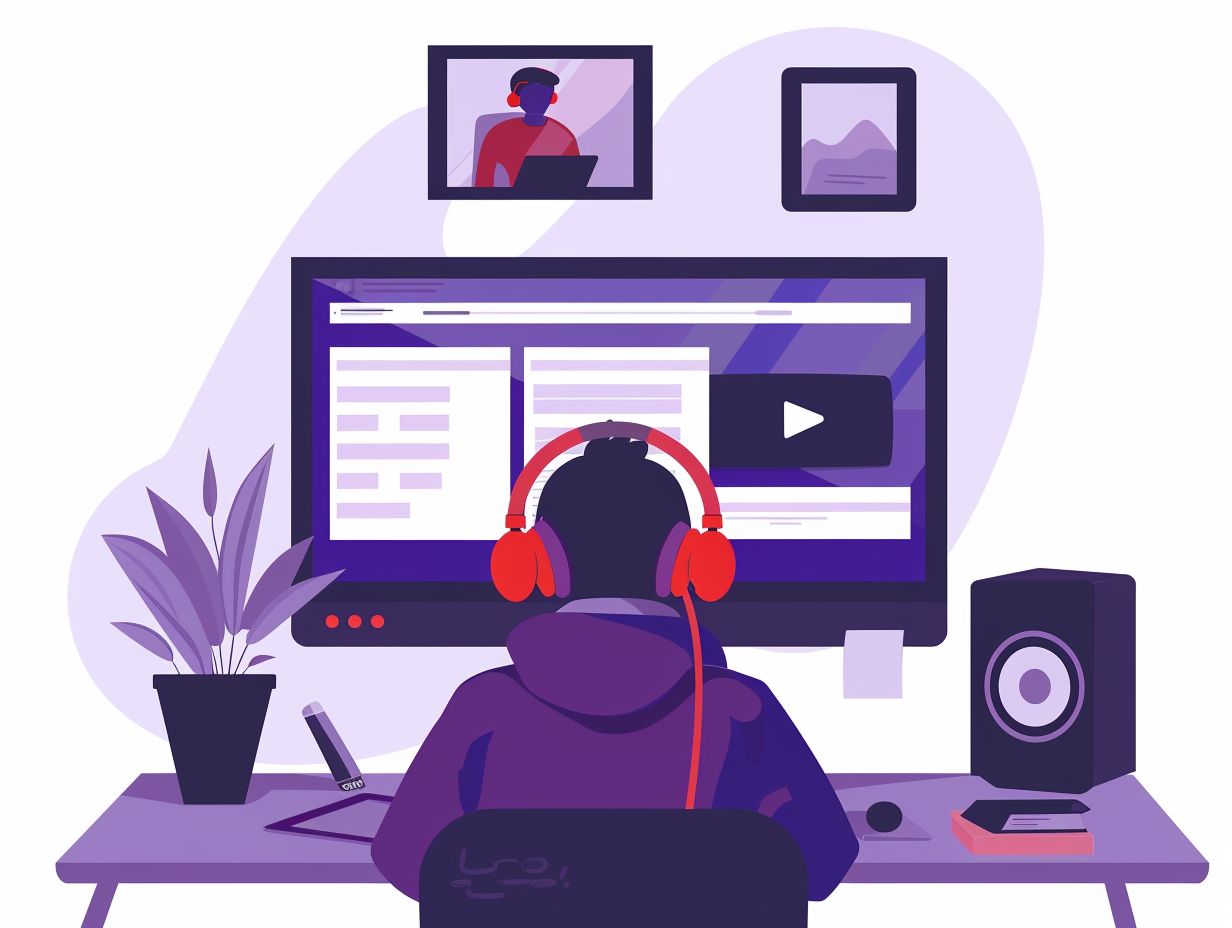In today’s digital age, the role of video content in technical e-learning is considered essential. From providing demonstrations and tutorials to engaging animations and simulations, video content offers a dynamic learning experience for students in technical fields.
This article will explore the benefits of incorporating video content in technical education, the types of video content that work best, best practices for creating engaging videos, and techniques for seamless integration into e-learning platforms. Key metrics for measuring the success of video content and future trends in innovative technologies and strategies will also be discussed.
Whether you are a student, educator, or instructional designer, this article aims to provide you with valuable insights into leveraging video content for technical e-learning.
Key Takeaways:

The Importance of Video Content in E-Learning
In the realm of e-learning, video content plays a pivotal role, offering you a dynamic and engaging medium for delivering educational material. The integration of video content has seen substantial growth since November 2015, with a significant 83 percent increase in usage by 2022, highlighting its effectiveness in improving learning outcomes.
This surge in the use of video content can be attributed to its capacity to accommodate diverse learning styles, making complex concepts more accessible and encouraging active engagement. Studies indicate that learners retain 65-70% more information when presented visually through videos as opposed to text-based formats. Experts advocate that the interactive nature of videos enhances information retention and application, culminating in a more immersive learning experience for students at varying educational levels.
Benefits for Technical Education
Incorporating video content into technical education offers a variety of benefits, making complex concepts more easily understandable. Dr. Lynell Burmark, an esteemed expert in the field of education, has highlighted the cognitive advantages of visual learning, emphasizing the effectiveness of videos in improving retention and comprehension among learners.
Videos not only simplify intricate topics but also promote engagement by catering to diverse learning styles. By utilizing a blend of visuals, animations, and real-life examples, technical educators can create dynamic and interactive learning experiences that spark students’ interest and promote active participation. Studies indicate that video-based learning results in a notable increase in information retention, as learners tend to recall visual content more effectively than traditional text-based materials.
Types of Video Content for Technical E-Learning
In technical e-learning, consider using various types of video content to meet diverse learning styles and objectives. Demonstrations and tutorials cater to different preferences and purposes, offering a range of options for delivering complex technical information.
Demonstrations are ideal for visually-oriented learners who prefer seeing concepts in action, while tutorials offer step-by-step guidance for hands-on learners seeking to master specific skills. Interactive animations can engage and challenge learners with dynamic visuals, enhancing retention and comprehension. Simulations provide a platform for learners to practice real-world scenarios in a safe environment, promoting practical skills and decision-making abilities.
Each type of video content offers distinct benefits and applications, contributing to a comprehensive and interactive e-learning experience.
Demonstrations and Tutorials
In technical e-learning, demonstrations and tutorials play a vital role in transferring knowledge and acquiring skills. Utilizing tools like Vyond and Animaker allows educators to develop visually engaging content that simplifies intricate concepts and offers step-by-step guidance to learners.
These interactive platforms not only enhance comprehension but also accommodate various learning preferences, thereby promoting inclusivity and effectiveness in the educational process. By integrating animations, simulations, and interactive components, educators can elevate student engagement levels and improve information retention.
The dynamic features of Vyond and Animaker enable customization, ensuring that the content remains pertinent and current in swiftly evolving technical domains. These tools offer educators a creative avenue to design visually captivating lessons that resonate with learners on a profound level, fostering a more interactive and immersive learning environment.
Animations and Simulations

Incorporating animations and simulations into technical e-learning content can enhance the learning experience for students. These interactive elements serve to capture the attention of learners and facilitate improved retention of intricate information.
By presenting interactive scenarios and visually stimulating content, students can apply theoretical knowledge in practical contexts, enhancing their critical thinking abilities.
Educational platforms such as Articulate Storyline and Brightcove offer educators the necessary tools to develop interactive modules that cater to various learning preferences, fostering a customized and adaptable learning environment.
This fusion of technology and educational principles revolutionizes conventional learning methods into a dynamic and compelling process.
Creating Engaging and Effective Video Content
Crafting engaging and effective video content for technical e-learning requires a blend of creativity, pedagogy, and technology. You can leverage innovative platforms such as Adobe and WellSaid Labs to deliver impactful learning experiences that resonate with learners and drive knowledge acquisition.
By integrating storytelling techniques, you can transform complex technical concepts into digestible, engaging narratives that captivate students’ interest.
Utilizing interactive features like quizzes, simulations, and virtual labs can further enhance the learning process, making it immersive and dynamic.
Staying abreast of emerging trends in video production and instructional design is crucial for keeping e-learning content relevant and compelling.
The fusion of these elements not only enriches educational outcomes but also fosters a holistic learning environment that encourages active engagement and knowledge retention.
Best Practices for Technical E-Learning Videos
Incorporating best practices in the creation of technical e-learning videos is crucial for achieving optimal learning outcomes. By following standards such as SCORM and utilizing tools like MurfAI and d’Vinci Interactive, you can elevate the quality, interactivity, and compatibility of your video content with e-learning platforms.
By integrating features like interactive quizzes, branching scenarios, and gamification elements, you can significantly enhance learner engagement and retention. Focusing on these components allows content creators to develop a dynamic and immersive learning environment that caters to a diverse range of learning preferences.
Optimizing videos for mobile compatibility and ensuring seamless integration with Learning Management Systems (LMS) are essential steps in maximizing the reach and efficacy of e-learning content.
Integrating Video Content into E-Learning Platforms
The seamless integration of video content into e-learning platforms is a critical factor in improving the overall learning experience. You can leverage the tools and techniques provided by Cisco and leading platforms like Adobe to create a cohesive and engaging educational environment that caters to diverse learning preferences.
When you implement video content in e-learning, you can increase student engagement and retention by providing a multi-sensory learning experience. By making use of features such as interactive quizzes, virtual labs, and live streaming, you can develop dynamic lessons.
Cisco’s networking solutions and Adobe’s powerful editing tools allow for smooth content creation and delivery. These technologies give the power to you to personalize learning paths, efficiently monitor student progress, and foster collaboration among learners.
By incorporating scalable video solutions, you can enhance accessibility, making learning more inclusive and interactive for students using various devices and in different locations.
Tools and Techniques for Seamless Integration
Utilize effective tools and techniques for integrating video content into e-learning platforms to enhance the educational experience. Leading solutions like Allegro Media Design and cutting-edge technologies introduced post-2016 provide educators with the capabilities to create dynamic and engaging video-based learning modules.
These platforms offer features such as interactive video quizzes, video analytics, and mobile-responsive design to ensure that learners can access versatile and personalized learning experiences. By integrating artificial intelligence and machine learning algorithms, these tools can deliver adaptive video content tailored to individual learner preferences and performance metrics.
Virtual and augmented reality technologies have expanded possibilities for immersive video learning, enabling students to interact with content in a more engaging and immersive manner. These advancements have transformed the landscape of online educational content delivery.
Measuring the Success of Video Content in Technical E-Learning

When evaluating the effectiveness of video content in technical e-learning, you need to monitor and analyze key performance indicators (KPIs) to assess learner engagement and comprehension. By adopting SCORM standards and leveraging data-driven insights from platforms like Brightcove, you can track how video content impacts learning outcomes.
Incorporating analytics-driven assessment methodologies provides valuable feedback on how learners interact with video content, identifying areas for improvement and enhancing overall educational quality. These tools help ensure that video content aligns with learning objectives and remains engaging and relevant.
SCORM compliance is essential for seamless integration and interoperability across various e-learning platforms, improving the accessibility and usability of video content for learners. This comprehensive approach to evaluating video content in technical e-learning enables educators to make informed decisions and optimize educational materials for maximum effectiveness.
Key Metrics to Track
Identifying and tracking key metrics in technical e-learning videos is essential for assessing the impact and value of the content delivered. Platforms like WellSaid Labs and data analytics tools introduced post-2019 enable you, as an educator, to measure learner engagement, retention, and the effectiveness of video-based instructional materials.
Such metrics include completion rates, click-through rates, and viewer interaction levels. You can also monitor drop-off points within videos to enhance content delivery and optimize learning experiences. Analytics tools like WellSaid Labs offer detailed data on student responses, allowing you to tailor your teaching methods to meet learner needs effectively. These tools provide insights into the duration of video views, facilitating adjustments to improve the overall educational experience.
Future Trends in Video Content for Technical E-Learning
The landscape of video content in technical e-learning is continuously evolving, driven by innovative technologies and strategies that enhance the learning experience. Future trends post-2022 are likely to focus on AI-enhanced solutions like MurfAI and interactive platforms such as d’Vinci Interactive, offering personalized and immersive learning experiences for students.
These advancements in video content are paving the way for a more engaging and effective learning environment. AI technologies are being leveraged to provide intelligent recommendations, adaptive learning paths, and real-time feedback to learners, helping them grasp complex technical concepts more efficiently. Interactive learning platforms like d’Vinci Interactive are integrating gamification elements, virtual simulations, and collaborative tools, making the learning process interactive, dynamic, and enjoyable.
The shift towards personalized educational experiences tailors content delivery based on individual learning styles, preferences, and progress, ultimately enhancing student engagement and retention rates.
Innovative Technologies and Strategies
The integration of innovative technologies and strategies is reshaping the landscape of technical e-learning, offering you new avenues for enhanced educational experiences. Solutions such as Cisco and advancements in AI-driven platforms post-2016 are driving the future of video-based learning, presenting exciting opportunities for educators and learners alike.
These cutting-edge tools have revolutionized the way content is delivered and consumed in a virtual learning environment. With Cisco’s robust networking solutions and AI-powered platforms enhancing personalized learning experiences, you can now access a wealth of knowledge tailored to your individual needs. The seamless integration of these technologies has not only made learning more interactive and engaging but has also catered to a diverse range of learning styles, making education more accessible and effective.
Frequently Asked Questions
What is the importance of leveraging video content for technical e-learning?

Leveraging video content allows for a more engaging and interactive learning experience, making it easier for students to understand complex technical concepts.
How can video content be incorporated into technical e-learning courses?
Videos can be used as supplementary materials or as the main instructional tool, depending on the course design and objectives.
What are the benefits of using video content in technical e-learning?
Video content allows for better visualization and demonstration of technical concepts, making it easier for students to retain information and apply it in real-world scenarios.
Can video content be used for both beginner and advanced technical courses?
Yes, video content can be tailored to suit the level of the course and the needs of the students, making it suitable for both beginners and advanced learners.
Are there any best practices for leveraging video content in technical e-learning?
Some best practices include keeping videos short and focused, using animations or graphics to enhance understanding, and incorporating interactive elements to keep students engaged.
How can I create effective video content for technical e-learning?
Effective video content for technical e-learning should have clear and concise narration, relevant visuals, and should follow a logical flow to aid understanding and retention of information.
